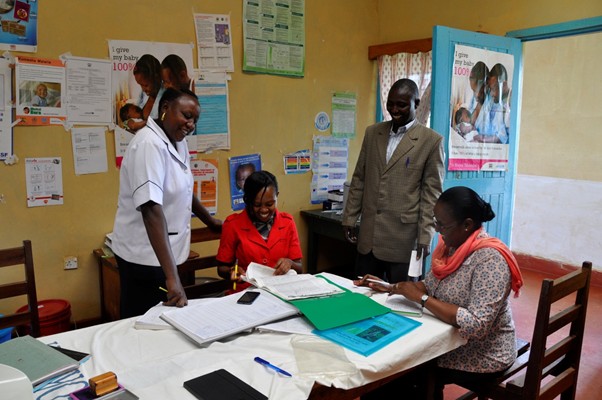Ending an Outbreak: The Importance of Strong Surveillance
The polio outbreaks in Ethiopia and Kenya were declared over this June, emphasizing the importance of strong surveillance in knowing the virus has gone from a country.

In June, an outbreak response assessment team in the Horn of Africa declared that transmission of poliovirus has been interrupted in Ethiopia and Kenya. The site of an outbreak of polio two years ago that led to the paralysis of 223 children across Ethiopia, Kenya and Somalia, the Horn of Africa has seen an outbreak response that has increased population immunity, strengthened community engagement and extended surveillance systems.
The assessment sought to determine whether or not polio transmission has been stopped, to outline the work still be done to achieve and maintain polio-free status, and to provide recommendations for strengthening acute flaccid paralysis (AFP) surveillance across the region. AFP is the symptom that indicates the possible presence of poliovirus, yet it can also have other causes. Surveillance systems must be strong enough to pick up on every case of AFP and ensure it is tested for polio in order to be 100 % sure that it is caused by something other than polio, that polio is not present in the country. This is why strengthening surveillance plays such an important role in closing polio outbreaks.In all three outbreak countries, efforts were taken to strengthen contact with at-risk populations, particularly pastoral and nomadic communities as a way to involve them in surveillance. By identifying water points and markets, engaging with nutrition and water, sanitation and hygiene programmes, and veterinarian services, plans were strengthened to ensure children from these communities didn’t slip through the net. In Somalia, joint human and animal vaccinations were held in Puntland, which reached 26,400 children with the oral polio vaccine (OPV), measles vaccines and vitamin A tablets, 36% of whom had never received the polio vaccine before. In Ethiopia, social mobilisers succeeded in informing parents of the risks of polio and upcoming campaigns in 80 % of the Somali region. Making these connections and raising awareness helps communities understand the importance of looking for and reporting AFP cases.
In Somalia, while immunity in urban areas and amongst mobile population has improved, there remain significant concerns about rural communities. Only 68 of 115 districts are fully accessible, leaving around 350,000 under 5s unreached by polio vaccines. The assessment team determined that it was premature to close the outbreak in Somalia and recommended a minimum of 12 months without detection of poliovirus and with good and validated surveillance before a decision can be made.
While surveillance was considered sufficient in Ethiopia and Kenya to declare confidently that transmission has stopped, the assessment team emphasised that there was much further to go to expand and strengthen surveillance in all three countries in order to keep children in the region safe from polio.
While Somalia saw an improvement in surveillance following the outbreak, the assessment team found enough gaps not to be confident that transmission has stopped.
For every 100,000 children under the age of 15, a strong surveillance system would expect to pick up on one to two cases of AFP. Every district that does not identify and report this one case per 100,000 is therefore labelled a ‘silent’ district, as those AFP cases are not reaching the ears of those in the surveillance system. In all countries, being able to test that one case for polio in a laboratory is the one thing that enables the system to reliably vouch for the presence or absence of polio. And ultimately, it is that knowledge that will enable us to corner and eliminate the threat of the virus for ever.
“Our confidence in the strength of the surveillance system lies in the knowledge of health workers.” Amina Ismail
‘Active’ surveillance is the most useful tool in tackling silent districts, and is being expanded in Ethiopia, Kenya and Somalia. Amina Ismail is a surveillance officer in Kenya who works to improve the sensitivity of surveillance by visiting health centres, schools, traditional healers and any other sites that could pick up on AFP cases, strengthening the knowledge of the people who form the heart of the system.
“Through my work, I ensure that every health worker knows about the polio eradication initiative and they know the case definition of AFP. This means it is not likely that they can miss a case,” explains Amina. “We have community health workers especially in hard to reach areas that are helping in active case searches. Our confidence in the strength of the surveillance system lies in the knowledge of health workers.
“As we approach the end of polio across Africa I am getting more energy, because once we have eradicated polio I will have achieved something that I will be able to tell my grandchildren: that I was key in eradicating a very serious disease in this world. So that is what is pushing me; surveillance is part of polio eradication history.”












